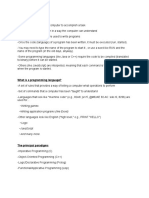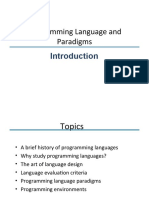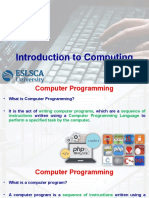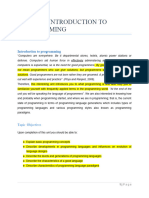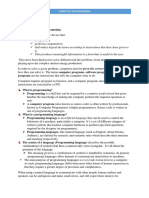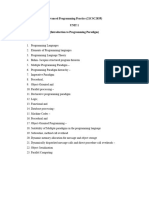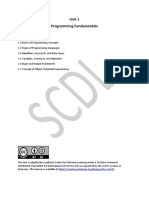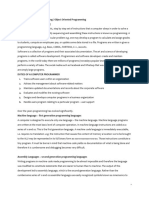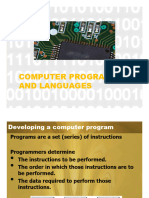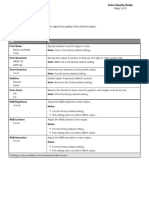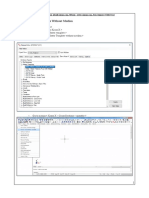0% found this document useful (0 votes)
15 views66 pagesZSM Programming Lecture 8
This lecture introduces the fundamentals of programming, including definitions, types of programming languages, and key programming elements such as variables, loops, and functions. It emphasizes the importance of writing efficient and readable code, as well as the process of debugging and handling exceptions. Additionally, it covers file handling and the significance of proper output formatting in programming.
Uploaded by
leenkoma22Copyright
© © All Rights Reserved
We take content rights seriously. If you suspect this is your content, claim it here.
Available Formats
Download as PPTX, PDF, TXT or read online on Scribd
0% found this document useful (0 votes)
15 views66 pagesZSM Programming Lecture 8
This lecture introduces the fundamentals of programming, including definitions, types of programming languages, and key programming elements such as variables, loops, and functions. It emphasizes the importance of writing efficient and readable code, as well as the process of debugging and handling exceptions. Additionally, it covers file handling and the significance of proper output formatting in programming.
Uploaded by
leenkoma22Copyright
© © All Rights Reserved
We take content rights seriously. If you suspect this is your content, claim it here.
Available Formats
Download as PPTX, PDF, TXT or read online on Scribd
/ 66
